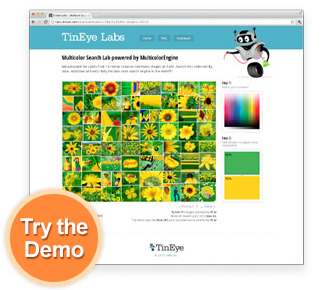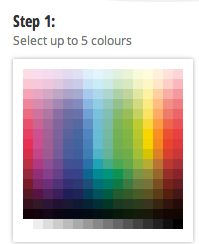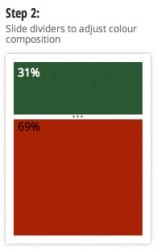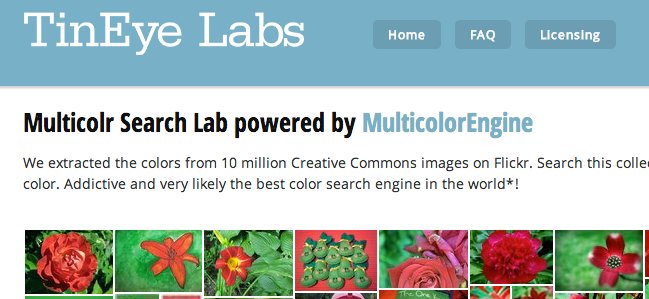How to Find Creative Commons Images By Color
 There are a lot of great sites out there for finding free images that you can use in your site. Whether you want to use a free stock photo site such as Morguefile or StockXchange (down for maintenance) or if you want to find Creative Commons photos on Google Image Search or Flickr, there’s no shortage of ways to find free, legal photos for your site.
There are a lot of great sites out there for finding free images that you can use in your site. Whether you want to use a free stock photo site such as Morguefile or StockXchange (down for maintenance) or if you want to find Creative Commons photos on Google Image Search or Flickr, there’s no shortage of ways to find free, legal photos for your site.
But for designers, these current methods are a bit lacking. Though they work well if you need to find an image of a clock for a blogpost or a generic picture of a man smiling to fill a space on your site, what happens if you, like many designers, need your images to be of a specific color?
TinEye, the makers of the popular reverse image search engine, have a potential solution.
As a means of demonstrating their MulticolorEngine, which is a tool to help find images in a database by color, TinEye offers a free tool named “Multicolr Search Lab” (misspelling intentional) which searches Flickr’s database of some 10 million Creative Commons-licensed images to find the ones that feature the colors you need.
Though the tool is amazingly powerful and simple to use, designers still need to use a little bit of caution before jumping in as there’s still one easy way that you can get in trouble using the images you find.
How Multicolr Search Lab Works
 The basic idea of the multicolr Search Lab is pretty straight forward. First, you select up to five colors that you’re looking for in the image using the color picker on the right hand side.
The basic idea of the multicolr Search Lab is pretty straight forward. First, you select up to five colors that you’re looking for in the image using the color picker on the right hand side.
Though you can’t precisely select the colors that you want, you can fine tune those later so it’s only important that you get your color choices as close as possible at this stage.
After picking your initial colors, you use the box in “Step 2” to both change the composition of the colors, giving more weight to some than others by dragging the sliders, and also to fine tune the colors if you know the exact Hex values.
 When you’re done, if all went well, you should have a multi-page grid display of Flickr images that are Creative Commons-licensed and match relatively closely to the image colors you chose.
When you’re done, if all went well, you should have a multi-page grid display of Flickr images that are Creative Commons-licensed and match relatively closely to the image colors you chose.
To see the full sized images (and download them) you simply click through and are taken to the Flickr page of the photo in question.
In my testing, the process worked best with fewer colors. The more colors that were added, the more TinEye struggled to find useful images and the more extraneous colors appeared. However, with two or three colors, TinEye consistently had a good selection of images dominated by colors that matched (or nearly matched) my selections.

But while the system seemed to hold up pretty well and did a great job finding color-matching images, there is an limitation that might hold it back from widespread use.
The Problem
As great as the matching technology is, TinEye’s tool has one very serious drawback. Though it only detects and presents Creative Commons-licensed images, it does not indicate what license they are placed under and there is no way to filter what images you get.
This means that the images you see when you do a search will include those available under commercial and non-commercial license as well as those requiring and not requiring share-alike terms.
For designers, the group most likely to be interested in this tool, this is critical information. If one is going to incorporate an image from this service into a print or Web design, it’s important that the user know instantly if it is commercially available or if they have to re-license their new work under the same terms.
Right now, the only way to find out the full license of the image is to click through to the Flickr page and, from there, click through to the “View All Sizes” page. However, if you’re looking for an image with a specific license, you might have to click through dozens to find the one that you want.
Obviously, since this tool is just a demo for a more powerful image search tool aimed at large companies, it doesn’t behoove them to add this feature. Not only is it extra time and resources (no matter how slight) to add it in, but by not filtering their results, they give a better demonstration of the search too, returning more results.
Still, that does make it less powerful for designers, or anyone else, just looking for free to use image of the right color.
Bottom Line
In the end, TinEye’s technology is very powerful and the integration with Creative Commons licenses is great. Though it would have been nice if it had been integrated in a more useful and productive way, it’s still the kind of inventive uses that many people had envisioned when Creative Commons originally introduced machine-readable versions into its licenses.
Still, if TinEye were to add a way to filter or at least indicate what licenses the images were under, that would make the tool much more powerful and easy to use.
Even with its imperfection, TinEye’s Multicolr Search Lab is still, most likely, the best way to find a Creative Commons image by color. However, I just hope that the people who use it are careful and don’t jump to conclusions about the images they see.
One false move could result in a nasty DMCA notice or even a lawsuit…
Want to Reuse or Republish this Content?
If you want to feature this article in your site, classroom or elsewhere, just let us know! We usually grant permission within 24 hours.
